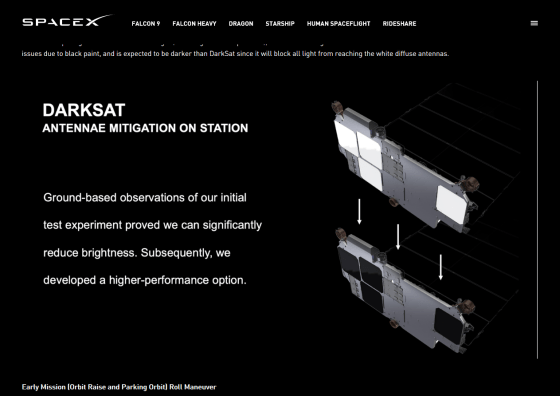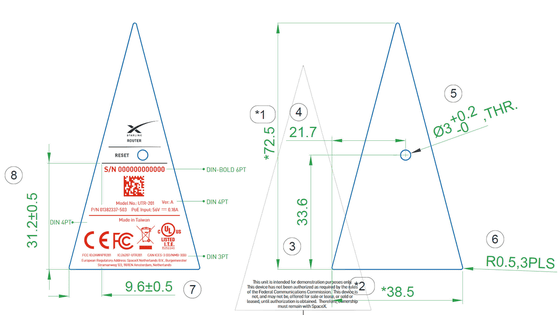SpaceX launches 60 new satellites for 'Starlink' to build the Internet in space and is ready to connect to the Internet already

SpaceX Starlink is now its own ASN and present at the Seattle Internet Exchange | Hacker News
https://news.ycombinator.com/item?id=23409063
PeeringDB
https://www.peeringdb.com/net/18747
Below is a movie that records how SpaceX actually launches a satellite.
Starlink Mission-YouTube
The 'Starlink' project launches approximately 12,000 artificial satellites in low orbits at an altitude of 1150 km, and plans to provide inexpensive and high-performance satellite Internet access to almost all regions of the earth. A low-latency, uncensored Internet environment is available everywhere on the planet and is believed to have a major impact on the world.
How will the 'Starlink Project,' which provides a high-speed Internet environment to every corner of the world, change the world? -GIGAZINE

The first Starlink satellite was launched on May 23, 2019, using the SpaceX reusable rocket '
SpaceX launches 60 first satellites for Starlink project to build Internet environment using artificial satellites-GIGAZINE

The seventh launch was successful on April 22, 2020. Although there were some problems such as the failure of Falcon 9 to return to the ground in the past seven launches, the goal of 'mounting satellites in orbit' continues to be achieved.

The 8th launch was conducted on June 4, 2020, except for the test. The number of artificial satellites launched this time is 60, and it is a new model equipped with a visor that protects the artificial satellites from sunlight. So far, a total of 480 artificial satellites have been put into orbit around the earth.
SpaceX-Updates

On this mission, we are launching the first Starlink satellite with a deployable visor to block sunlight from hitting the brightest spots of the spacecraft.Learn more about our work with leading astronomical groups to mitigate satellite reflectivity → https://t.co/xVuXVlEb8S
— SpaceX (@SpaceX) June 4, 2020
Starlink is not a replacement for providers because it does not support high-density user usage, but it serves as an important space IX in rural and mobile areas where there are no high-speed lines. Inter-satellite communication is not possible with the current satellite version 'Starlink v1', but 'Starlink v2' will support intersatellite communication. Since the transmission speed of light is 30% faster than optical fiber, it is possible to communicate in a vacuum, so it seems that higher speed communication will be possible. Another advantage of Starlink is that it reduces the number of hops , which indicates the number of times communication has relayed through network equipment.
Already in 2019, Starlink has been given an AS number necessary for Internet providers to communicate with each other, and the connection to the upstream IX has been completed. The service by Starlink is scheduled to start within 2020.
Related Posts:
in Hardware, Posted by darkhorse_log





